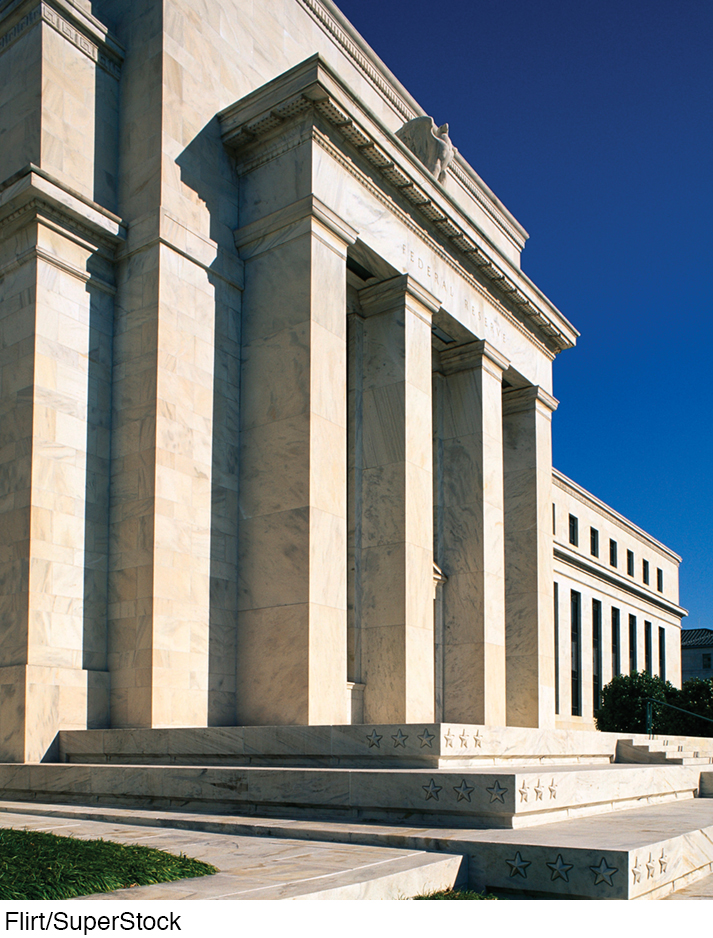Money Creation and the Federal Reserve
12

Learning Objectives
12.1 Explain how banks create money by accepting deposits and making loans.
12.2 Define fractional reserve banking and explain why banks can lend much more than they keep in reserves.
12.3 Explain how the money multiplier works and how it makes monetary policy decisions very powerful.
12.4 Define a money leakage and explain how it affects the money multiplier.
12.5 Describe the history and structure of the Federal Reserve System.
12.6 List the important banking functions conducted by the Federal Reserve regional banks and their branches.
12.7 Describe the Federal Reserve’s principal monetary tools.
12.8 Analyze the federal funds rate and how it affects all other interest rates.
12.9 Explain why the Federal Reserve’s policies take time to affect the economy.
In small towns and villages throughout Central and South Asia, Africa, and Latin America, entrepreneurship is flourishing. These are not your typical high-
These small loans and the new businesses they help create (largely by women in the poorest parts of the world) have been credited with bringing more people out of poverty in recent years than direct foreign aid has. How can a tiny loan of $50 have such a positive effect on the economy?
Quite easily, in fact. In Bangladesh, Fatima takes her $50 loan and buys cotton to make a dozen sharis. She sells the sharis at the local outdoor market for a total of $120, of which she uses $50 to pay back her microloan and $70 to buy more cotton to make even more sharis. Only this time, she is debt-
When a small loan is used to create a new business, jobs are created, which allows people to spend money at other businesses (also likely started from a microloan). The collective power of new businesses, jobs, and increased spending leads to healthy economic growth in the village, and it all started from a single microloan. Now, multiply this one case by the thousands of microloans being made available throughout the developing world, and the effect on reducing poverty is staggering. This example represents a microcosm of the global economy and the money creation process in which financial intermediaries play an important role.
During the recent 2007–
When consumers are not eager to spend, businesses suffer. Business owners develop a much bleaker view of the economy and reduce investment. Businesses may even cut jobs, jobs that are important for economic recovery.
But this wasn’t the entire story. Financial institutions during this time also lacked a willingness to lend to individuals and businesses that actually wanted to spend and invest. Why weren’t the banks eager to lend? And why did the lack of lending slow the economic recovery?
The answer is surprisingly similar to the situation of the villager seeking a small loan. When the financial industry was jolted by massive losses in the aftermath of the housing and construction collapse, many banks failed while others barely survived or required government bailouts. The scare faced by banks led to a severe tightening in lending practices (which, ironically, is the type of prudent lending that might have prevented the financial crisis to begin with). The unwillingness of banks to lend money prolonged the period of time necessary for economic recovery.
In times when individuals and businesses are unwilling to spend and banks unwilling to lend, people begin to look elsewhere for help. For the small village, it was the emergence of the microloan organizations. For the U.S. economy, people turned to the government to take action.
The Federal Reserve (or Fed), the central bank of the United States, has extensive power in controlling the supply of money and interest rates, key elements in its arsenal of tools to jumpstart the economy when markets fail to do so on their own. After the 2007–
This chapter takes a detailed look at the process by which banks go about creating money, as if out of thin air, by accepting deposits by savers and channeling these funds to borrowers.
We then study in more detail the role of the Federal Reserve, the guarantor of our money and our financial system. We will look at the history of the Fed, what it does with our money, and why it is called “the lender of last resort.” Lastly, we analyze the policies and tools the Fed can use to influence the money supply and interest rates.

Afghan women attend a village meeting to make payments on their microloans.